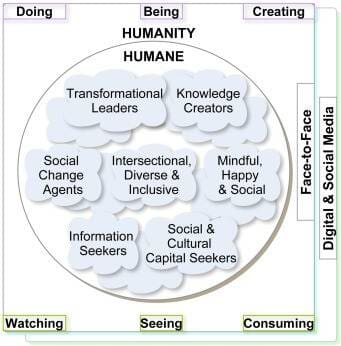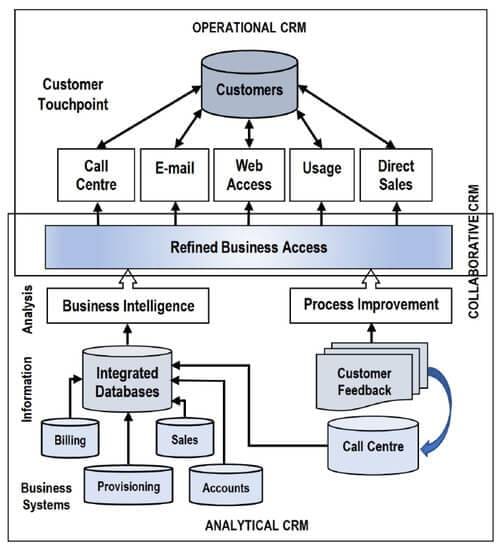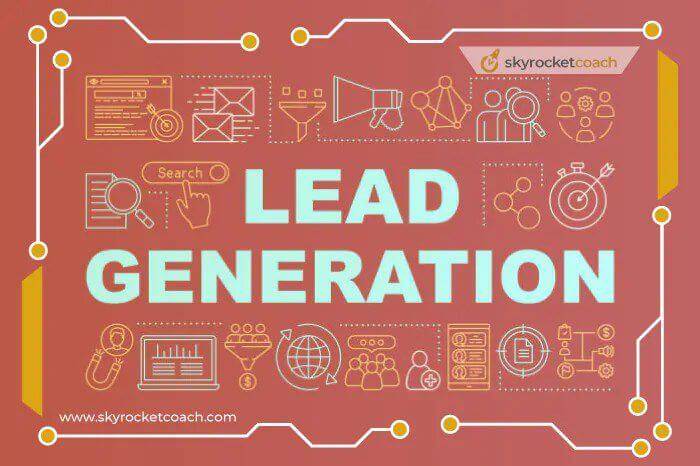Marketing automation is the buzzword of modern-day marketing. Automation is a natural fit with the increasing demand for personalized marketing messages and the need to streamline the customer journey. However, weighing the pros and cons of implementing marketing automation before diving headfirst into it is important. This blog will discuss the advantages and disadvantages of marketing automation in English.
We’ll be taking a balanced approach, looking at both sides of the coin, so you can make an informed decision about whether or not marketing automation is right for your business. Whether you’re a business owner looking to streamline your marketing efforts or a marketer exploring new strategies, this blog is for you. So without further ado, let’s dive into the world of marketing automation!
Introduction: What is Marketing Automation?
Marketing automation refers to the use of technology to automate various marketing tasks and communication with customers or potential customers, including social media management, email marketing, lead generation, and data analysis. It enables businesses to save time and resources while also increasing efficiency and scalability. Companies can create personalized and targeted campaigns that appeal to different customer segments through marketing automation tools.
However, while marketing automation offers many benefits, it also has its drawbacks, such as a potential loss of brand personalization and the risk of reducing the personal touch in customer interactions. Thus, finding the right balance between automation and human interaction in marketing is crucial to maximize the benefits and limit the drawbacks.
Advantage 1: Ability to Monitor Large Numbers of Visitors and Leads
Marketing automation tools offer numerous advantages, and one of the most significant is the capability to monitor large numbers of visitors and leads. By utilizing marketing automation, businesses can effectively track their leads’ journey and behavior, including their stages in the sales funnel and the content that drives them to engage more with the company. This information can help digital marketers refine their strategies and boost their results. With the ability to monitor leads’ actions, businesses can tailor their communication with their prospects and deliver content that is specific to their needs and interests.
Ultimately, the ability to monitor and analyze large numbers of visitors and leads is a powerful advantage that can significantly improve a company’s marketing strategy.

Disadvantage 1: Lack of Personal Touch
While automation can certainly streamline processes and save time, one of the main disadvantages of marketing automation is the lack of personal touch. Automated marketing campaigns may not take into account the unique needs and preferences of individual customers, leading to less effective customer targeting and potentially lower conversion rates. In order to find the right balance between automation and human interaction, marketers must prioritize the use of data-driven insights to personalize marketing efforts while still using automation tools to scale their campaigns.
Ultimately, successful marketing strategies will require a combination of both personalization and automation technologies.

Advantage 2: Streamlines Processes and Saves Time
Marketing automation software streamlines processes and saves marketing and sales teams time when following up on leads and guiding prospects through the conversion funnel. This valuable tool can automate repetitive tasks such as email marketing, social media posting, and ad campaigns, making the marketing process more efficient. By automating these tasks, marketers can focus on creating more personalized content for their audience and analyzing campaign data to improve future strategies. The saved time can also be used to nurture leads and build stronger customer relationships.
However, it’s important to strike a balance between automation and human interaction to avoid losing the personal touch that customers value.

Disadvantage 2: Not Cost-Effective
While marketing automation can streamline processes and save time, it’s important to note that it’s only sometimes a cost-effective option. Certain costs involve implementing and maintaining marketing automation software, such as the initial purchase of the software and ongoing updates and support.
Additionally, marketing automation can lead to an over-reliance on technology, potentially leading to a decrease in human interaction with customers. It’s important to strike a balance between automation and human interaction in marketing to ensure that costs are managed effectively while still providing a personalized experience for customers.
By considering both the advantages and disadvantages of marketing automation, businesses can make informed decisions about whether it’s the right choice for their marketing strategy.

Advantage 3: Boosts Overall Success of Marketing Strategies
Marketing automation is a valuable tool for businesses looking to boost the overall success of their marketing strategies. By automating some of the repetitive tasks associated with marketing, digital marketers are able to focus their attention on developing more effective marketing campaigns. This results in improved lead generation, lead nurturing, and higher conversion rates.
Additionally, marketing automation makes it easier for businesses to personalize their marketing messages by delivering targeted content at the right time to the right people. While automation does detract from some aspects of personalization, finding the balance between automated and manual processes can ultimately result in a more successful marketing effort.

Disadvantage 3: Reduces Brand Personalization
While marketing automation can streamline processes and save time, it also has a drawback in that it can reduce brand personalization. When marketing tasks are automated, marketers may need more flexibility to customize their campaigns or target specific audiences. This can result in the same or similar message being sent to all prospects, leading to a lack of personal touch and reduced brand personalization.
However, with the use of AI and personalized touches, marketers can still enhance their conversion optimization strategy while utilizing automation techniques. Finding the balance between automation and human interaction is key to achieving marketing success.

Advantage 4: Allows Digital Marketers to Scale Their Efforts
Marketing automation allows digital marketers to scale their efforts and reach a larger audience in a shorter amount of time. By automating repetitive tasks such as email marketing and social media scheduling, digital marketers can focus on more high-level strategies that require human input. Automation also allows for targeted and personalized messaging to different segments of the audience, increasing the chances of conversion.
However, while automation can lead to increased efficiency and scalability, it should only partially replace the personal touch of human interaction. It is important for businesses to find a balance between automation and human interaction in order to maintain brand personalization and provide excellent customer service.

Disadvantage 4: Possible Negative Impact on Customer Service
One possible disadvantage of marketing automation is its potential negative impact on customer service. While automation can help streamline communication and improve response times, it lacks the personalized touch that customers often seek. Automated responses can be too generic and fail to address a customer’s specific needs.
Additionally, relying too heavily on automation can lead to a disconnect between the customer and the brand, which can ultimately lead to reduced loyalty and sales. It’s essential for businesses to find the right balance between automation and human interaction to ensure that they’re delivering the best possible customer experience. Combining automation with personalized human touch can help businesses provide tailored solutions that meet the unique needs of their customers. Businesses can maintain a strong customer base and increase customer loyalty by doing so.

Conclusion: Finding the Balance Between Automation and Human Interaction in Marketing.
In conclusion, while marketing automation offers numerous advantages such as time-saving, streamlined processes, and scalability, it also has its drawbacks, including a lack of personal touch and reduced brand personalization. Acknowledging these disadvantages and finding the right balance between automation and human interaction in marketing is crucial.
This means leveraging automation where it is appropriate while maintaining the importance of human interaction with customers. Marketers need to understand where automated processes make sense and where they risk undermining the customer experience.
Ultimately, the best course of action will be to strike a balance between automation and human interaction to ensure the best outcomes for both the business and the customer.
Frequently Asked Questions (FAQs)
What is the downside of marketing automation?
The downside of marketing automation lies in the potential loss of personalization and human touch. While automation streamlines processes, it can sometimes lead to generic or impersonal interactions with customers. Over-reliance on automation without proper customization and monitoring can result in a lack of genuine connection and reduced customer satisfaction.
What are the benefits of marketing automation?
Marketing automation offers numerous benefits. It improves efficiency by automating repetitive tasks, allowing marketers to focus on strategic activities. It enables personalized and timely communication with customers, enhancing engagement and nurturing leads. Automation also provides data insights for better targeting and segmentation, facilitates lead generation and nurturing, and ultimately helps drive revenue growth.
What are the negative effects of automation?
One negative effect of automation is the potential loss of jobs or displacement of workers. Automation can replace certain manual or repetitive tasks, leading to workforce reductions in some areas. Additionally, overreliance on automation without human oversight can result in errors or glitches that may negatively impact operations and customer experiences.
What are the positive effects of automation?
Automation has positive effects such as increased productivity and efficiency. It reduces manual labor, streamlines processes, and allows for faster execution of tasks. Automation also improves accuracy, minimizing human errors. It enables scalability, as processes can be easily replicated and scaled up. Overall, automation empowers businesses to accomplish more in less time, leading to improved performance and growth.
What are positive examples for automation?
Positive examples of automation include email marketing automation, where personalized and timely emails are triggered based on customer behavior. Another example is customer relationship management (CRM) automation, which centralizes customer data and automates tasks like lead tracking and sales pipeline management. Social media scheduling tools and chatbots for customer support are also positive examples of automation.
What is one of the negative aspects of automation?
One negative aspect of automation is the potential for a loss of human connection and personalized experiences. When processes become fully automated, there is a risk of customers feeling detached or receiving generic interactions. Without human intervention or customization, automation can create a sense of impersonality, reducing the quality of customer relationships and experiences.




